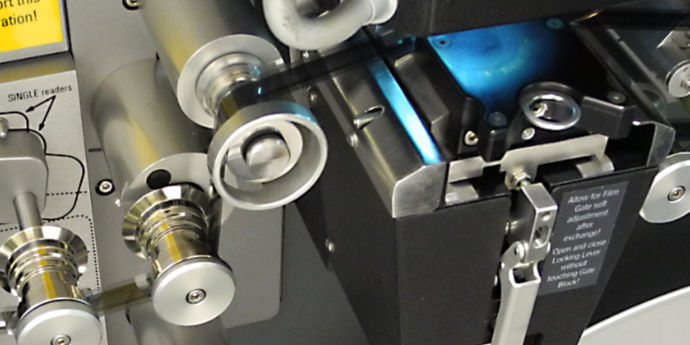Twice before we’ve looked at digital restoration options:
- Exploring the Possibilities of Digital Restoration: Shows a digital restoration test of some Tarax Show kine footage done by Lowry Digital Imaging in Burbank, California.
- Experiments in Digital Restoration with PFClean: Covers my own experiments with PFClean from The Pixel Farm in the UK.
Each of these tests produced promising results, but the cost of a full-length restoration was prohibitive.
Were there any other options? A bit of digging turned up another software product — “Diamant” from HS-Art in Austria — more or less the European alternative to PFClean. That led me to Promoscape in Melbourne, who were providing digital film restoration services using Diamant.
Promoscape is run by Tony Laughton who offered to do a short test for me, so I duly sent some sample footage on a USB drive.
Promoscape returned test results showing the following processes:
- Automated de-dusting using Diamant.
- Manual repair in Diamant of medium to heavy film damage; bad film splices and bad camera cuts; removal of bad frames and repair of larger areas of white and black film damage.
- Video noise reduction.
Dealing with the jitter (explained in the post Assessing the Scans Part 2 — Jitter) proved to be a problem: “With regard to stabilisation, we can’t find a cost effective and consistent way to achieve this with the footage.”
Tony’s offsider Rob explained that the jitter was not just horizontal and vertical movement (displacement) but included rotation as well. (Subsequently I discovered that scans from the Spirit Datacine also included vertical squash and stretch of frame height.)
So while the problem of jitter remained to be solved, the results with dust and scratch removal were promising — the processed material was noticeably cleaner. The final video noise reduction step restored somewhat of a “videotape look” to the footage.
Below is a before and after sample from The Magic Mirror (1961) restored with Diamant. This particular kine has the worst problems with dust and scratches, so the results here are not perfect. Better results were achieved with other test footage, but I include this here because it was supplied as a split-screen comparison.
In the next post we will look at a home-made solution to the jitter problem.
